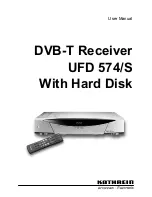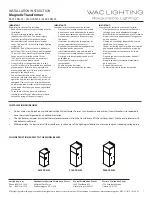
FT-2000
Operating Manual
Vertex Standard Co., Ltd.
5
coaxial cable is used. This transceiver utilizes standard “M” (“PL-259”) type connectors,
except for the “RX OUT” BNC connectors used for special filters, etc.
Grounding
The FT-2000 transceiver, like any other HF communications apparatus, requires an
effective ground system for maximum electrical safety and best communications
effectiveness. A good ground system can contribute to station efficiency in a number of
ways:
It can minimize the possibility of electrical shock to the operator.
It can minimize RF currents flowing on the shield of the coaxial cable and the
chassis of the transceiver; such currents may lead to radiation which can cause
interference to home entertainment devices or laboratory test equipment.
It can minimize the possibility of erratic transceiver/accessory operation caused by
RF feedback and/or improper current flow through logic devices.
An effective earth ground system make take several forms; for a more complete
discussion, see an appropriate RF engineering text. The information below is intended
only as a guideline.
Typically, the ground connection consists of one or more copper-clad steel rods, driven
into the ground. If multiple ground rods are used, they should be positioned in a “V”
configuration, and bonded together at the apex of the “V” which is nearest the station
location. Use a heavy, braided cable (such as the discarded shield from type RG-213
coaxial cable) and strong cable clamps to secure the braided cable(s) to the ground rods.
Be sure to weatherproof the connections to ensure many years of reliable service. Use
the same type of heavy, braided cable for the connections to the station ground bus
(described below).
Inside the station, a common ground bus consisting of a copper pipe of at least 25 mm
(1”) diameter should be used. An alternative station ground bus may consist of a wide
copper plate (single-sided circuit board material is ideal) secured to the bottom of the
operating desk. Grounding connections from individual devices such as transceivers,
power supplies, and data communications devices (TNCs, etc.) should be made directly
to the ground bus using a heavy, braided cable.
Do not make ground connections from one electrical device to another, and thence to
the ground bus. This so-called “Daisy-Chain” grounding technique may nullify any
attempt at effective radio frequency grounding. See the drawing below for examples of
proper grounding techniques.
Inspect the ground system - inside the station as well as outside - on a regular basis so






































